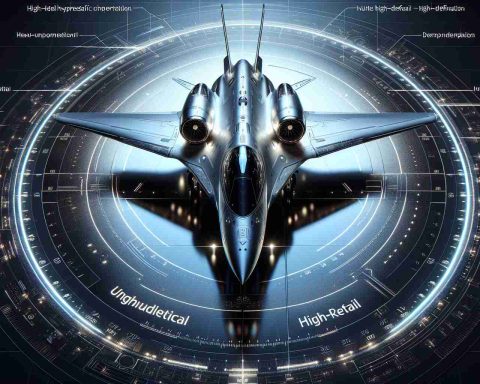In the aftermath of Ukraine receiving its first F-16 fighter jets from Western allies, these U.S.-manufactured aircraft have primarily focused on bolstering the country’s air defense operations. Reports have surfaced suggesting that one of these F-16s may have successfully engaged a Russian Su-34 fighter jet, marking a significant moment in the ongoing conflict.
Official confirmation of the F-16 delivery came from Ukraine’s President, who noted the operational status of these jets, although the exact number has not been disclosed. Notably, Lithuania’s foreign minister previously acknowledged their arrival in late July, indicating a swift transition into service.
Countries such as Denmark and the Netherlands have actively contributed F-16s, with further supplies expected shortly, adding to the growing fleet. Despite this reinforcement, Ukraine endured losses with at least one F-16 crashing in late August, resulting in the death of a pilot during a significant combat engagement.
Experts suggest that while the current fleet may not offer overwhelming superiority against Russian forces, it represents a crucial step in modernizing Ukraine’s air capabilities. Transitioning to NATO-standard weapons and doctrines is critical for Ukraine to effectively counter Russia’s prolonged assaults, particularly from advanced missile systems.
In the short term, the deployment strategy emphasizes using the F-16s for defensive operations, alleviating pressure on traditional ground-based systems, while Ukrainian forces await additional aircraft to strengthen their offensive capabilities in the airspace.
The Impact of F-16 Fighter Jets on Ukraine’s Defense and Regional Stability
The introduction of F-16 fighter jets into Ukraine’s air defense operations has reverberated across various facets of life, from the everyday experiences of citizens to broader geopolitical dynamics. This pivotal development not only enhances the military capabilities of Ukraine but also significantly impacts community morale, diplomatic relations, and the overall stability of the region.
Strengthening National Defense
The arrival of F-16 jets marks a decisive upgrade in Ukraine’s military capabilities. The jets are equipped with advanced technology, enabling Ukrainian forces to better respond to aerial threats posed by Russia. This modernization is crucial, especially against Russian missile systems, which have wreaked havoc on civilian infrastructure and military installations alike. The knowledge that a modern air force is now part of their defense strategy bolsters the confidence of many Ukrainians, who have lived under the constant shadow of conflict.
Moreover, the operational effectiveness of the F-16s has been underscored by reports of engagements in combat scenarios, with accounts suggesting that they have engaged enemy aircraft. This development not only serves as a tactical advantage but also has psychological implications, reinforcing the idea that Ukraine can defend its airspace and maintain sovereignty against foreign aggression.
Community Resilience and Morale
For communities deeply affected by the ongoing conflict, the arrival of F-16 jets has a significant psychological impact. Civilians often express a renewed sense of hope and resilience, feeling a greater sense of security knowing that their air defenses are being bolstered. This reinvigoration manifests in various forms, including increased participation in community defense initiatives and a collective determination to withstand the trials of war.
However, this boost in morale is not without its shades of grey. While many celebrate the arrival of advanced aircraft, controversies abound regarding the implications of military support from Western allies. There are concerns that increased military capabilities could lead to an escalation of conflict, straining relations and prolonging the war. Such complexities require careful navigation by the Ukrainian government as it balances military needs with prospects for peace.
Geopolitical Controversies
The provision of F-16s by NATO countries like Denmark and the Netherlands has sparked debate among allied nations. Some argue that these advanced fighter jets represent a considerable escalation in Western involvement in the conflict, potentially inviting retaliatory measures from Russia. Others contend that failing to equip Ukraine with modern defense systems could embolden further aggression from the Kremlin, destabilizing not just Ukraine but the entire region.
Moreover, debates continue about the effectiveness of these jets in the long term. Experts caution that while F-16s provide a tactical advantage, they do not guarantee air superiority without adequate training and further military support. This raises questions about the sustainability of Ukraine’s defense and the commitment of its allies in the long run.
Conclusion
The presence of F-16 fighter jets in Ukraine symbolizes a turning point in the nation’s fight for sovereignty. While they enhance military capabilities and bolster community morale, they also stir important discussions about the broader implications of military aid, the potential for escalated conflict, and the future of NATO-Russian relations. As Ukraine navigates this complex landscape, the international community watches closely, aware that the developments in Ukraine will have lasting effects on European security and global geopolitical dynamics.
For further updates and insights on international military affairs, visit Defense.gov.
The article has been updated: 2024-11-05 15:50
Here are some suggested related links:
– Defense News: A leading source for global defense and military news, offering insights and analysis on topics such as military aviation and geopolitical events.
– Jane’s Defence: A trusted platform for defense and security intelligence, featuring articles on military technology, aircraft, and defense strategies.
– Air Force Magazine: The official publication of the Air Force Association, focused on air power and military aviation, including developments in fighter aircraft like the F-16.
– The Moscow Times: An independent news outlet providing coverage of Russian perspectives on Ukraine and military developments in the region.
– Reuters: A global news organization that reports on current events, including international military operations and defense strategies.
– BBC News: A reputable source for news from around the world, offering updates on the ongoing situation in Ukraine and military affairs.
– CNN: A major news network that covers international news, including developments in military tactics and air defense systems relevant to Ukraine.
– U.S. Department of Defense: The official website of the U.S. Department of Defense, providing news and information about U.S. military operations and international partnerships.
These links will enhance your article by offering readers access to relevant information and perspectives on Ukrainian air defense and military aviation.
“The article has been updated:” 2024-11-06 02:46
What significance do the Ukrainian F-16s hold for the country’s air defense capabilities?
The introduction of F-16s into the Ukrainian air force marks a crucial enhancement of the nation’s air defense capabilities. These advanced multi-role fighter jets provide improved performance in terms of speed, agility, and avionics compared to older aircraft. The F-16s are equipped with modern technology that enables them to engage a variety of aerial threats effectively, thereby bolstering Ukraine’s defense posture amidst ongoing military challenges. This development not only strengthens Ukraine’s military might but also symbolizes international support in its pursuit of sovereignty and security.

















